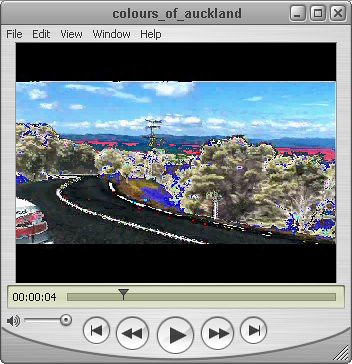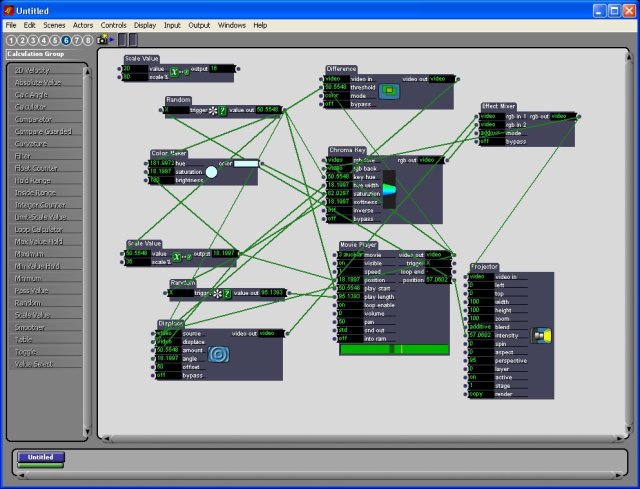Submitted by AliaK on Wed, 18/01/2006 - 20:31
CeC & CaC is The Carnival of e-Creativity & Change-agents Conclave - the first in a series of public events deploying an exploratory and widely-inclusive canvas of participation & content from India and the world. The forum aims to address the Creative Empowerment of Individuals by the burgeoning spread of Technology across multiple streams of Creative Human Endeavour. visit http://www.theaea.org/cec_cac for more details
Submitted by kathy on Tue, 03/01/2006 - 15:21
Finding my old bookmark files has made me nostalgic for the early computing days when everything was new and exciting and full of possibilities. One of my favourite magazines back in the early 90s was Mondo 2000. It was hard to get - only a few places in Brisbane stocked it, actually only two that I recall and even then it was occasional. By the time I got round to subscribing to the magazine it had finished being published and I lost my subscription renewal to the cause so to speak. At the time, it was cutting edge and the full gloss images and interviews with leading thinkers made it a great read. R.U. Sirius who was the editor of the mag has a podcast these days and can be found around mondoglobo.net. Here's a collection of links to mondo 2000 stuff:
mondo articles from the well (link updated : original link broken 25/09/2008 : http://www.well.com:70/1/Publications/MONDO )
Submitted by kathy on Wed, 28/12/2005 - 14:28

click on the image to goto the video player page
I've been spending the Christmas break learning more about interactive quicktime, max/msp and isadora for creating music and video and publishing them on the net. Below is the first piece I've created. I went a bit overboard on the effects in Isadora but it's an original piece and I learnt from it so I'm happy with it overall from a learning experience point of view.
How I created it:
- first I took videos with my dvd camera
- then I used DVDx to convert the .vob files to mpeg2 files which quicktime could open. when I installed winamp a couple of weeks ago, I noticed it can display video now also, though strangely, sometimes the winamp videos were upside down whilst they played correctly orientated in quicktime. (perhaps I used strange setting whilst encoding?)
- then I imported the video into isadora, and patched up a storm whilst trying out some of the effects
- I can only save 5sec clips from isadora as I'm using the trial version whilst I work out if I'll use it regularly in future. I'm hoping to learn how to do similar tasks in jitter (max component) as I'll have more control of what I'm doing, even though it's very quick and easy to get things done in isadora without having to know the code. still yet to decide on this.
- once I had the processed video clips, I opened them in quicktime again and joined them together - hence the rough edits
- then I made a couple of text tracks in quicktime and added these in. I tried out the eZediaQTI app whilst learning about the text tracks but decided on doing them manually in quicktime and editing the controls with notepad.
- next, I opened the gps data music patch I made in max/msp and ran it with the soundwalk recordings I made the other week whilst at Mission Beach in Auckland. unfortunately, the mic was picking up a lot of noise from the wind blowing past the mic pickup so there's a lot of distortion. I filtered some of this out in audacity and flattened the audio into one track.
- then I added the audio track to the video with text quicktime movie
- then uploaded the finished piece to archive.org using ourmedia and viewed source on the movie's ourmedia page & copied the quicktime player code here
well, I'm sure there's a quicker way of doing it! which requires less processing and time, but this was an exercise in creating an original piece from start to finish. as you can tell, I'm not a designer or very good programmer either, but I'm happy to finish number one. here's hoping the subsequent efforts will improve and be done more efficiently. I could have used the original unprocessed videos but they seemed a little plain. need to find the right balance I guess..
here's a screen shot of the isadora patch:

Submitted by AliaK on Sat, 10/12/2005 - 10:44
In September / October 2005, the Banff Centre hosted the recent REFRESH! conference, The First International Conference on the Histories of Media Art, Science and Technology. "Refresh! discussed questions of historiography, methodology and the role of institutions of media art. The conference contained key debates about the function of inventions, artistic practice in collaborative networks, the prominent role of sound during the last decades, and emphasized the importance of intercultural and pop culture themes in the Histories of Media Art. Readings of new media art histories vary richly depending on cultural contexts. This event called upon scholarship from a strongly international perspective. Refresh! represented and addressed the wide array of disciplines involved in the emerging field of Media Art. Beside Art History these included the Histories of Sciences and Technologies, Film-, Sound-, Media-, Visual-, and Theatre Studies, Architecture, and Visual Psychology, just to name a few." If you missed the face-to-face conference, visit the website to listen to the recorded sessions. http://www.banffcentre.ca/bnmi/programs/archives/2005/refresh/lisiten.asp
Submitted by kathy on Wed, 26/10/2005 - 18:17
I've started reading the Interactive Convergence : Critical Issues in Multimedia e-book and so far it's providing some more useful names of other books/reports to chase up. The first chapter is about the different new media university courses in the UK. pasting snippets here as I come across things to follow up or ideas to think about.
Chapter 1
Locating Interactive Media Production
(page 2)
[quote]
A few media/cultural studies writers began to look at the social
and cultural impact of new media, Sherry Turkle (1985) Second Self:
Computers and the Human Spirit; Carolyn Marvin (1988) When Old
Technologies were new; Philip Hayward (1990) Culture, Technology and
Creativity in the Late Twentieth Century; Jay Bolter, (1991) Writing
Space: The Computer, Hypertext, and the History of Writing; Philip
Hayward and Tana Wollen, eds. (1993) Future Visions: New technologies
of the Screen and Roger Silverstone (1994) Consuming Technologies:
Media and Information in Domestic Spaces
[/quote]
This paragraph has an interesting point.. there's not many books or published educational materials for teaching 'new media' - I suppose the plethora of academic papers are not used for this purpose??
(page 9-10)
[quote]
8. Maintaining curriculum integrity - quality teaching resources
There are other difficulties facing interactive media course designers
within any academic context. There is an impoverished supply of good
academic sources and few records of the historical development of design
for CD-ROM or the web. Compared with the sources we can draw on for
the teaching of video and film production for example, good books in the
field of interactive-media production are rare. A simple request to fellow
course leaders of interactive media in 7 different institutions for their
favourite production books, revealed that we are resourceful when it
comes to choosing teaching materials but also that most of our books were
over 4 years old and some were very old indeed. This is their list:
Submitted by JC on Wed, 19/10/2005 - 06:20
 KISSS - Kinship International Strategy on Surveillance and Suppression, is a touring exhibition of products, process and residues from the meta-performance project KISSS. A Conical Exchange Project with Elastic Residency (UK) : Responding to political, social and personal issues around surveillance and suppression, KISSS incorporates the individual and collaborative practices of artists, writers and curators. OPENING FRIDAY 28 from 6 - 8.30pm, KISSS will be held from OCTOBER 28 - NOVEMBER 13. A free forum will take place on Saturday 29 October with Joanna Callaghan & Deej Fabyc in collaboration with local artists. All welcome. Interested parties are invited to participate - please contact Conical at info@conical.org.au. Read more or visit http://www.elastic.org.uk or http://www.conical.org.au for more information
KISSS - Kinship International Strategy on Surveillance and Suppression, is a touring exhibition of products, process and residues from the meta-performance project KISSS. A Conical Exchange Project with Elastic Residency (UK) : Responding to political, social and personal issues around surveillance and suppression, KISSS incorporates the individual and collaborative practices of artists, writers and curators. OPENING FRIDAY 28 from 6 - 8.30pm, KISSS will be held from OCTOBER 28 - NOVEMBER 13. A free forum will take place on Saturday 29 October with Joanna Callaghan & Deej Fabyc in collaboration with local artists. All welcome. Interested parties are invited to participate - please contact Conical at info@conical.org.au. Read more or visit http://www.elastic.org.uk or http://www.conical.org.au for more information
Submitted by AliaK on Sun, 04/09/2005 - 20:48
CTHEORY is an international peer-reviewed journal of theory, technology, and culture, publishing articles, interviews, event-scenes and reviews of key books.
visit http://www.ctheory.net/ for more
Submitted by AliaK on Sun, 04/09/2005 - 20:41
"Hive Networks" is a cross-disciplinary research and development project into embedded devices and ubiquitous networked computing, defined as 'multi-faceted transformative devices' - tools that enable users to manage space, time and the boundaries around the self in new and previously unthinkable ways.
Submitted by AliaK on Sat, 20/08/2005 - 19:57
A talk and software demonstration prepared for a Lecture Series of the Digital Arts & New Media Program, University of California Santa Cruz - April 25, 2005
Do we really attain interaction with today's computers [HCI] or just interaction through computers
Pages